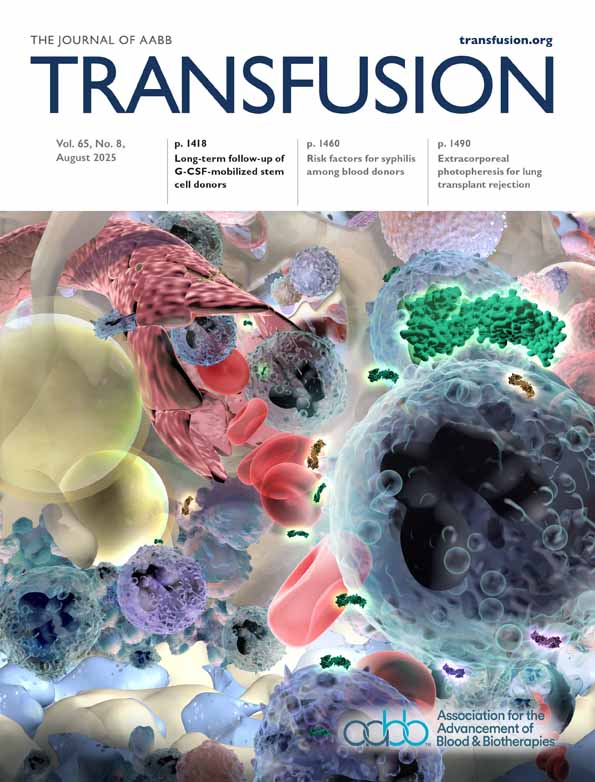Measurement of red cell survival using biotin-labeled red cells: validation against 51Cr-labeled red cells
Supported in part by grant no. PO1 HL46925 from the National Institutes of Health and grant no. RR00059 from the National Institutes of Health through the General Clinical Research Center, University of Iowa.
Abstract
BACKGROUND: Anemia is a serious problem in the fetus and preterm infant. To investigate the physiology and pathophysiology of anemia and to assess responses to blood transfusions and erythropoietin therapy, measurement of circulating red cell survival would be useful.
STUDY DESIGN AND METHODS: Because the standard 51Cr method exposes the patient or subject to radiation, a practical, accurate method for measuring red cell survival was developed on the basis of determining the number of biotin-labeled red cells that persist in the circulation by using fluorescein-labeled avidin and flow cytometry. In addition, disappearance of total biotin label was measured by using 125I-streptavidin. Results of each detection method were compared to red cell survival measured by the standard 51Cr method.
RESULTS: Biotinylated cells persisted in circulation with life spans approaching normal. Despite near-normal persistence in circulation of the biotin-labeled cells, about one-half of the biotin label left the circulation over the first few weeks, causing early curvilinear disappearance. This observation is consistent with the hypothesis that about one-half of the biotin label leaves the red cells. However, about one-half of the biotin was permanently attached, which produced linear disappearance and approximately normal life span estimates for the linear survival curve appearing after the first few weeks.
CONCLUSION: Red cell survival can be measured accurately in humans using enumeration of biotinylated red cells. The method is practical and does not expose the patient to radiation.




